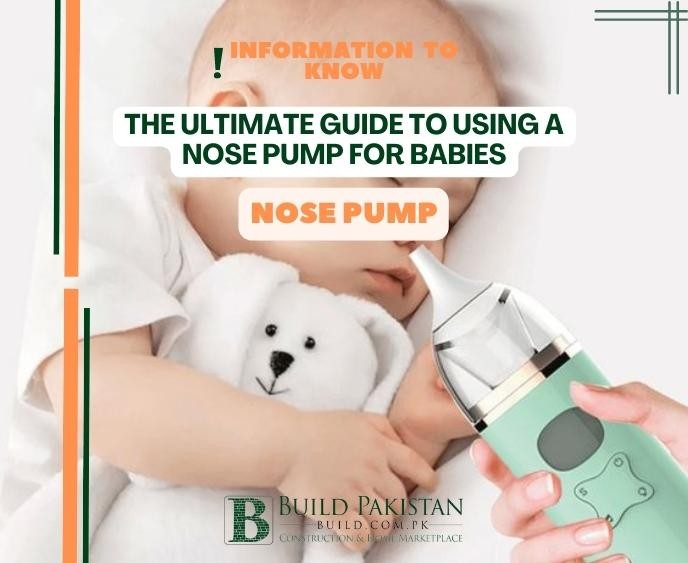The Ultimate Guide to Using a Nose Pump for Babies

Introduction:
Nasal congestion is a common problem that
affects babies, especially during the first year of life. It can be caused by
various factors such as allergies, cold, flu, or dry air, and can cause
discomfort and difficulty in breathing. A nose pump for babies, also known as a
nasal aspirator, is a device used to remove mucus from a baby's nasal passages
to relieve congestion. In this blog, we will discuss the advantages, drawbacks,
and features of a nose pump for baby in more detail.
Advantages
Easy to use:
Nose pumps for babies are designed to be easy to
use. They come with simple instructions and can be used by parents or
caregivers without any difficulty. The process involves placing the device in
the baby's nostril and gently sucking the mucus out.
Non-invasive:
Unlike other methods of removing mucus, such as
using a bulb syringe or cotton swab, nose pumps for babies are non-invasive and
do not cause any discomfort or harm to the baby. This makes them a safer and
more comfortable option for parents and babies alike.
Safe:
Nose pumps for babies are safe to use and do not pose
any risk of injury to the baby. They are designed to be gentle and effective at
the same time, ensuring that the baby's delicate nasal passages are not damaged
during the process.
Effective:
Nose pumps for babies are highly effective in
removing mucus from the baby's nasal passages. They can provide immediate
relief from congestion and help the baby breathe more comfortably, making it
easier for them to sleep and eat.
Portable:
Nose pumps for babies are compact and portable,
making them easy to carry around. They can be used at home or while traveling,
ensuring that the baby can always have access to relief from nasal congestion.
Drawbacks
Cleaning:
Nose pumps for babies need to be cleaned after
every use, which can be time-consuming and tedious. This is because the device
comes into contact with the baby's mucus and needs to be thoroughly cleaned to
prevent the spread of germs and bacteria.
Battery life:
Some nose pumps for babies are
battery-operated, and their battery life may be limited, requiring frequent
battery changes or recharges. This can be inconvenient, especially when the
baby needs immediate relief from congestion.
Features
Suction power:
Nose pumps for babies come with different
suction power levels. Higher suction power can provide better results but may
also be more uncomfortable for the baby. It is important to choose a nose pump
with suction power that is appropriate for the baby's age and needs.
Size and shape:
Nose pumps for babies come in different sizes and shapes, and it is important to choose one that fits comfortably in the baby's nostril. This will ensure that the device is effective and comfortable to use.
Hygienic:
Some nose pumps for babies come with disposable
tips or filters to prevent the spread of germs and bacteria. This is an
important feature to consider, especially if the baby is at risk of infections.
Noise level:
Some nose pumps for babies may produce loud
noise, which can be unsettling for the baby. It is important to choose a nose
pump with a low noise level to ensure that the baby is comfortable during the
process.
In conclusion:
A nose pump for baby can provide several
advantages such as being easy to use, safe, effective, and portable. However,
it also has drawbacks such as the need for frequent cleaning and limited
battery life. When choosing a nose pump for baby, it is important to consider
features such as suction power, size and shape, hygiene, and noise level to
ensure the best possible results.









